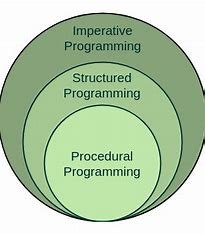Introduction
Structured Programming (SP) is a programming approach that enhances the management of software development processes. It aims to simplify the process by breaking it down into manageable modules or functions. SP is characterized by the use of looping constructs which’re essential in implementing algorithms and solving problems.
|
Key principles of Structured Programming include;
1. Function Division; Each part of the program should be contained within its function or method.
2. Modularity; The functions or methods should be independent. Can be combined to tackle problems.
3. Sequential Processing; The programs flow should follow a path moving from one part to another based on reasoning.
4. Conditional Processing; The program should have the ability to make decisions based on conditions allowing for paths of execution.
5. Looping Processing; The program should have the capability to repeat tasks until certain conditions are met.
6. Debugging and Testing; Structured Programming emphasizes debugging and testing processes to ensure efficient software.

Structured programming is a programming approach that prioritizes organizing and structuring code to improve readability, ease of maintenance and debugging capabilities. Some key aspects of structured programming include;
1. Utilizing defined constructs; Structured programming encourages the use of defined elements such, as procedures, functions, loops and conditional statements to establish a logical and controlled flow of execution.
2. Enhancing readability; By employing defined constructs structured programming enables the creation of code that’s easier to comprehend and understand.
3. Improving error detection and debugging capabilities; The clear control flow in programming makes it simpler to identify and rectify errors during the debugging process.
4. Emphasizing modularity and code organization; Structured programming promotes modularity and better organization of code which facilitates maintenance and updates.
5. Focusing on algorithm design; Structured programming places emphasis on designed algorithms and emphasizes algorithmic analysis to enhance overall program efficiency and performance.
In summary structured programming plays a role, in ensuring the reliability, efficiency and maintainability of software programs. By adhering to its principles and utilizing its constructs programmers can create code that’s more readable organized and efficient.

conclusion
In conclusion Structured Programming is vital, in managing software development processes.
Through the promotion of modularity a systematic approach, to programming and diligent practices for testing and debugging Structured Programming (SP) contributes to the creation of dependable software products. Its focus on clarity, readability and maintainability has made it an essential tool, for software developers worldwide.
write an frequently asked question on structured programming
1. What exactly’s structured programming?
Structured programming refers to a programming approach that aims to enhance the organization and readability of code by placing emphasis on structured constructs.
2. So what advantages does structured programming bring?
Well there are benefits associated with programming;
1. Enhanced Readability; By utilizing structured constructs structured programming makes it easier to read and comprehend the code.
2. Maintainability; The organized nature of the code makes it simpler to modify and maintain, in larger programs.
3. Better Error Detection and Debugging Capabilities; With its focus, on modularity and defined functions structured programming facilitates error detection and debugging.
3. discuss the components of programming languages
These components are known as programming constructs. Here are a few used ones;
1. Sequence; A sequence refers to a series of statements executed one after another.
2. Selection; Selection statements, like “if” statements allow programs to choose between sets of statements for execution.
3. Iteration; Iteration statements, such as “while” and “, for” loops enable programs to execute a set of statements until a specified condition is met.
4. Procedure/Function; A procedure or function is a named sequence of statements that can be called by parts of the program.
Structured programming employs these constructs as building blocks in order to create organized and readable code structures.
4. What are the key distinctions, between programming and unstructured programming?
The primary disparities between programming and unstructured programming include;
1. Control flow; Structured programming places emphasis on maintaining an organized flow of execution ensuring a systematic approach to code execution. On the hand unstructured programming lacks a defined control flow, which can lead to less predictability, in the order of code execution.
2. Debugging; Structured programming offers debugging capabilities enabling developers to easily identify and rectify errors within their code. This enhanced debugging functionality simplifies the process of troubleshooting and resolving issues.
These differences highlight the advantages that structured programming brings in terms of control flow management and debugging proficiency compared to programming.
